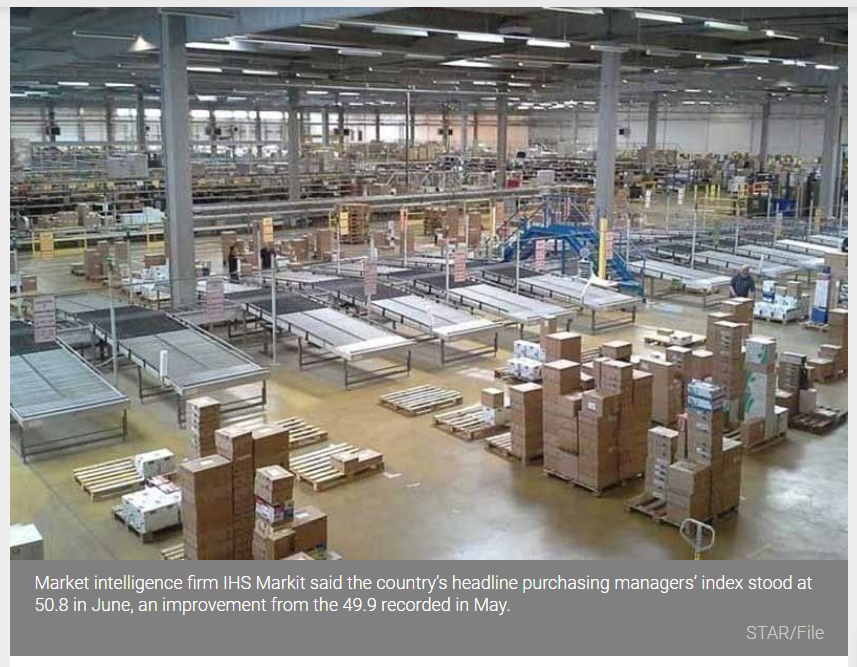Philippines: Factory output returns to growth zone
MANILA, Philippines — The continued downgrade of quarantine restrictions helped the manufacturing sector return to positive territory last month as more factories managed to operate at a much higher capacity.
Market intelligence firm IHS Markit said the country’s headline purchasing managers’ index (PMI) stood at 50.8 in June, an improvement from the 49.9 recorded in May.
June’s headline index managed to register above the neutral 50 mark that separates expansion from contraction. The country’s PMI came from two consecutive months of contraction following the reimposition of lockdown measures.
The headline PMI provides a quick overview of the health of the manufacturing sector based on the weighted average of five indicators: new orders (30 percent weight), output (25 percent), job creation (20 percent), supplier delivery times (15 percent) and inventories (10 percent).
IHS Markit’s latest reading revealed a rebound in operating conditions with softer declines in output levels, new orders, employment, and a renewed expansion in pre-production inventories.
This follows the downgrade to general community quarantine (GCQ) since mid-May for Metro Manila and the nearby provinces as active COVID-19 cases started to decline anew.
“Expectations of greater production levels were reflected in firms adding to their stock levels, amid hopes of a stronger third quarter,” IHS Markit economist Shreeya Patel said.
“It was not all good news in June, however, with MECQ measures (in some areas) persisting and, in some instances, delaying the supply of inputs,” she said, referring to modified enhanced community quarantine.
Production levels and new orders in the local level are still on a decline, albeit modest, amid subdued domestic demand following MECQ measures outside the capital.
But, new orders from overseas markets continued to rise, aided by easing restrictions on the global level.
On the other hand, IHS Markit noted that firms continue to scale back on their hiring efforts, leading to the 16th consecutive month of contraction in employment, though the latest decline was the softest in three months.
To mitigate delays and expectations of better demand in the coming months, producers added to their input inventory holdings in June, ending a two-month period of decline. Pre- and post-production inventory also rose marginally.
On the downside, pressure remained on the supply chain due to lengthening of delivery times from suppliers widely linked to stock shortages and port congestion. Firms also faced additional surcharges and higher freight costs.
Materials shortages also caused the prices of inputs to rise, heightening cost pressures on manufacturers. This caused them to raise the prices of their products to pass on some of the cost burdens to customers.
Nonetheless, firms remain optimistic about their overall prospects for higher production levels in the next 12 months with business sentiments reaching a three-month high with hopes of greater demand.
But, the degree of confidence is still below the long-run series average, suggesting some firms remain wary of the longer-term implications of the pandemic.
“With the vaccination program still in the early stages, controlling the spread of the pandemic remains principal to preventing another series of tightening restrictions. Firms in the meantime will hope issues surrounding the supply of materials are resolved,” Patel said.
Source: https://www.philstar.com/business/2021/07/02/2109533/factory-output-returns-growth-zone


 Thailand
Thailand




